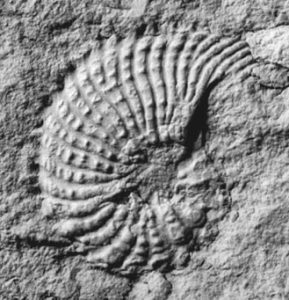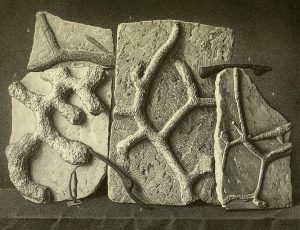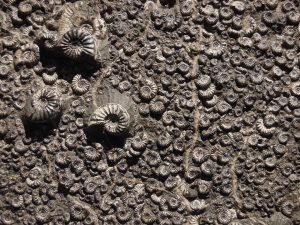Fossil
Fossiler er rester eller spor av døde dyr eller planter. Et eksempel på hvordan et fossil oppstår: Et dyr dør. Kjøttet råtner, men skjelettet består og kan bli begravet under for eksempel sand eller mudder. I slike sedimentære lag blir beinrestene/sporene beskyttet mot mekanisk forvitring. Etter lang tid begynner kanskje lagene å erodere og til slutt blir fossilen eksponert igjen og funnet av mennesker.
Dette er grunnen til at vi i dag kan finne fiskerester helt oppe i Himalaya. De har på et tidspunkt blitt begravet dypt i bunnen av havet, men da kontinentene kollidererte, ble den gamle sjøbunnen presset opp i fjellkjeden som ble dannet (se platetektonikk).





 This project (EDU-ARCTIC) has received funding from the European Union’s Horizon 2020 research and innovation programme under grant agreement No 710240. The content of the website is the sole responsibility of the Consortium and it does not represent the opinion of the European Commission, and the Commission is not responsible for any use that might be made of information contained.
This project (EDU-ARCTIC) has received funding from the European Union’s Horizon 2020 research and innovation programme under grant agreement No 710240. The content of the website is the sole responsibility of the Consortium and it does not represent the opinion of the European Commission, and the Commission is not responsible for any use that might be made of information contained.